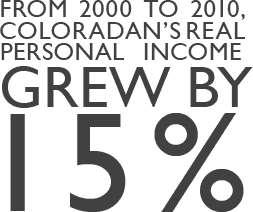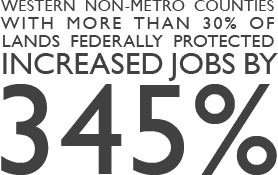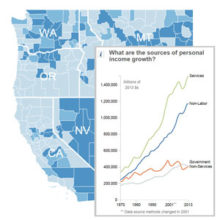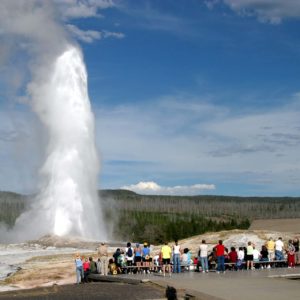This report summarizes Colorado’s economy and the role of federal protected lands. It analyzes how the state has performed, what is driving economic growth, and how protected lands play a positive role in attracting people, investment, and businesses to Colorado communities.
Download Report PDF
High wage services industries led Colorado’s job growth, diversifying the state’s economy.
Change in employment by industry, Colorado 2000-2010
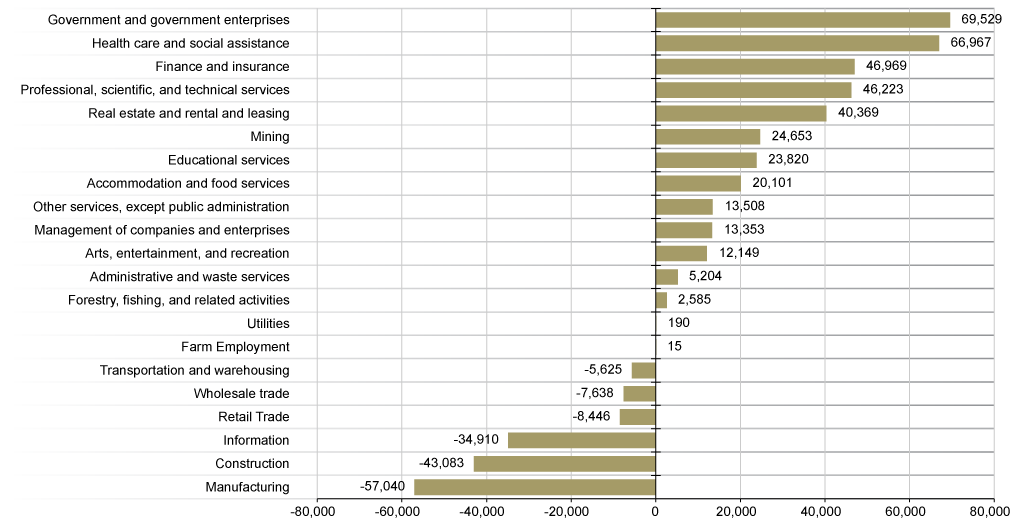
From 2000 to 2010, Colorado’s economy created 228,893 new jobs, with the great majority of this growth coming from service — related industries. The fastest growing sectors included government, health care, finance, and professional services such as engineers and architects.
Employment by industry, percent of total, Colorado 2010

The state’s diverse industry mix means that assets–such as quality education and unique federal public lands–that attract people and business across a range of services sectors are critical to Colorado’s economic future.
Colorado is attracting people and investment, while creating businesses faster than the U.S.
Research shows that people are drawn to areas for their quality of life and natural amenities, bringing investment income and business connections to the larger world.

Share of population growth, Colorado 2000-2010

New Businesses Per Month for Every 100,000 Adults, 2010

In 2010, Colorado was a top-ranked entrepreneurship state, creating 450 new businesses per month for every 100,000 adults, outpacing the U.S. as a whole which created 340 new businesses per month for every 100,000 adults.
Dividends, interest, and rent, Colorado 1970-2010
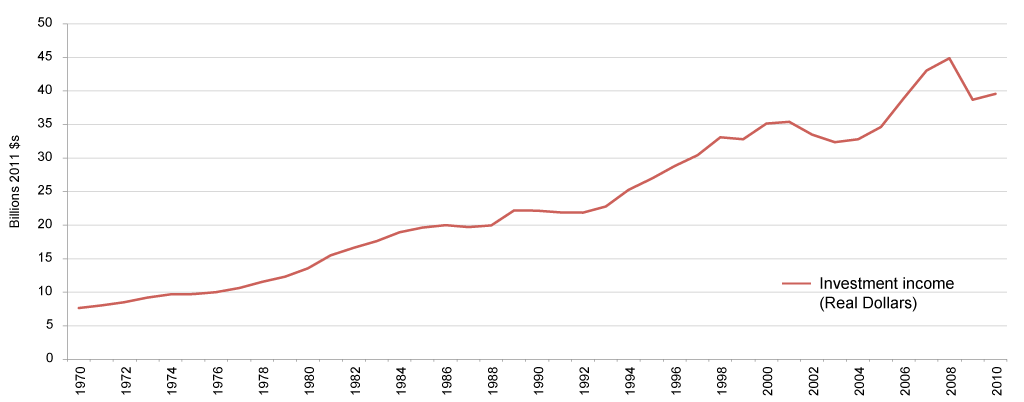
From 1970 to 2010, investment income–dividends, interest, and rent–increased from $7.6 to $39.6 billion, in real terms, a 417% gain. In 2010, investment income was 18% of total personal income in the state. Combined with transfer payments, mostly age-related, non-labor income made up 31% of total personal income in 2010.
Economists believe protected federal lands are an important driver of economic growth.
Across Colorado and the West, protected federal lands such as national parks, monuments, and wilderness areas are associated with higher rates of job growth.
Percent change in employment, western non-metro counties 1970-2010

From 1970 to 2010, western non-metropolitan counties with more than 30 percent federal protected land increased jobs by 345%. By comparison, non-metro counties with no protected federal lands increased employment by 83%.
Colorado federal lands
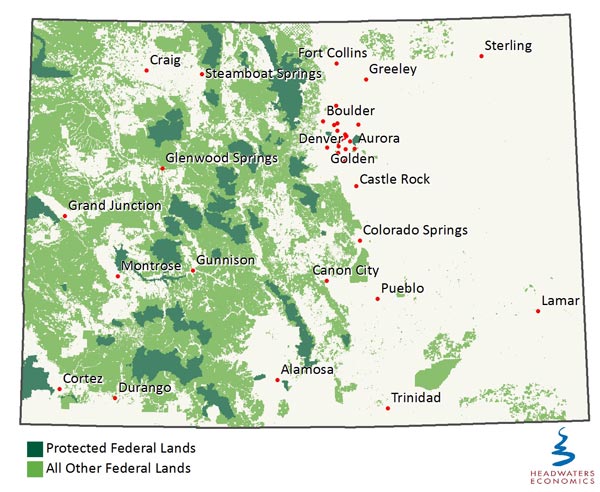
The high quality natural environment in Colorado is what draws talented people here, and keeps them here.
—Dr. John Loomis
Department of Agricultural
and Resource Economics
Colorado State University
References
The West is defined as the 11 public lands continental western states: Arizona, California, Colorado, Idaho, Nevada, Oregon, Utah, Washington, and Wyoming.
“Protected” federal lands include areas such as National Parks, Wilderness, National Monuments, National Conservation Areas, National Recreation Areas, National Wild and Scenic Rivers, and National Wildlife Refuges. For more details, see: https://headwaterseconomics.org/tools/economic-profile-system/tech-info/.
More than 100 economists recently urged the President to protect federal lands as an important economic asset. See: “Economists Urge President Obama to Protect Federal Public Lands.”
Lorah, P. R. Southwick, et al. 2003. Environmental Protection, Population Change, and Economic Development in the Rural Western United States. Population and Environment 24(3): 255-272; McGranahan, D. A. 1999. Natural Amenities Drive Rural Population Change. E. R. S. U.S. Department of Agriculture. Washington, D.C.
Non-Metropolitan counties are counties without an urbanized area of 50,000 or more population, or a high degree of social and economic integration with a Metropolitan Statistical Area as measured by commuting ties.
Data in this publication are from: U.S. Department of Commerce. 2012. Bureau of Economic Analysis, Regional Economic Information System, Washington, D.C.; U.S. Department of Commerce. 2012. Census Bureau, Population Division, Washington, D.C.; U.S. Department of Commerce. 2012. Bureau of Economic Analysis, Regional Economic Information System, Washington, D.C.; U.S. Department of Commerce. 2011. Census Bureau, County Business Patterns, Washington, D.C.; AZ Land Resources Information System, 2009; MT Natural Heritage Program, 2008; Conservation Biology Institute, 2008 (for CA); Conservation Biology Institute, 2006 (for remaining states). Kauffman Index of Entrepreneurial Activity. 2011. Ewing Marion Kauffman Foundation, Kansas City, MO.
For More Information
Dr. Ray Rasker, Ph.D., Executive Director, Headwaters Economics, , 406-570-7044.
Headwaters Economics is an independent research group whose mission is to improve community development and land management decisions in the West.


